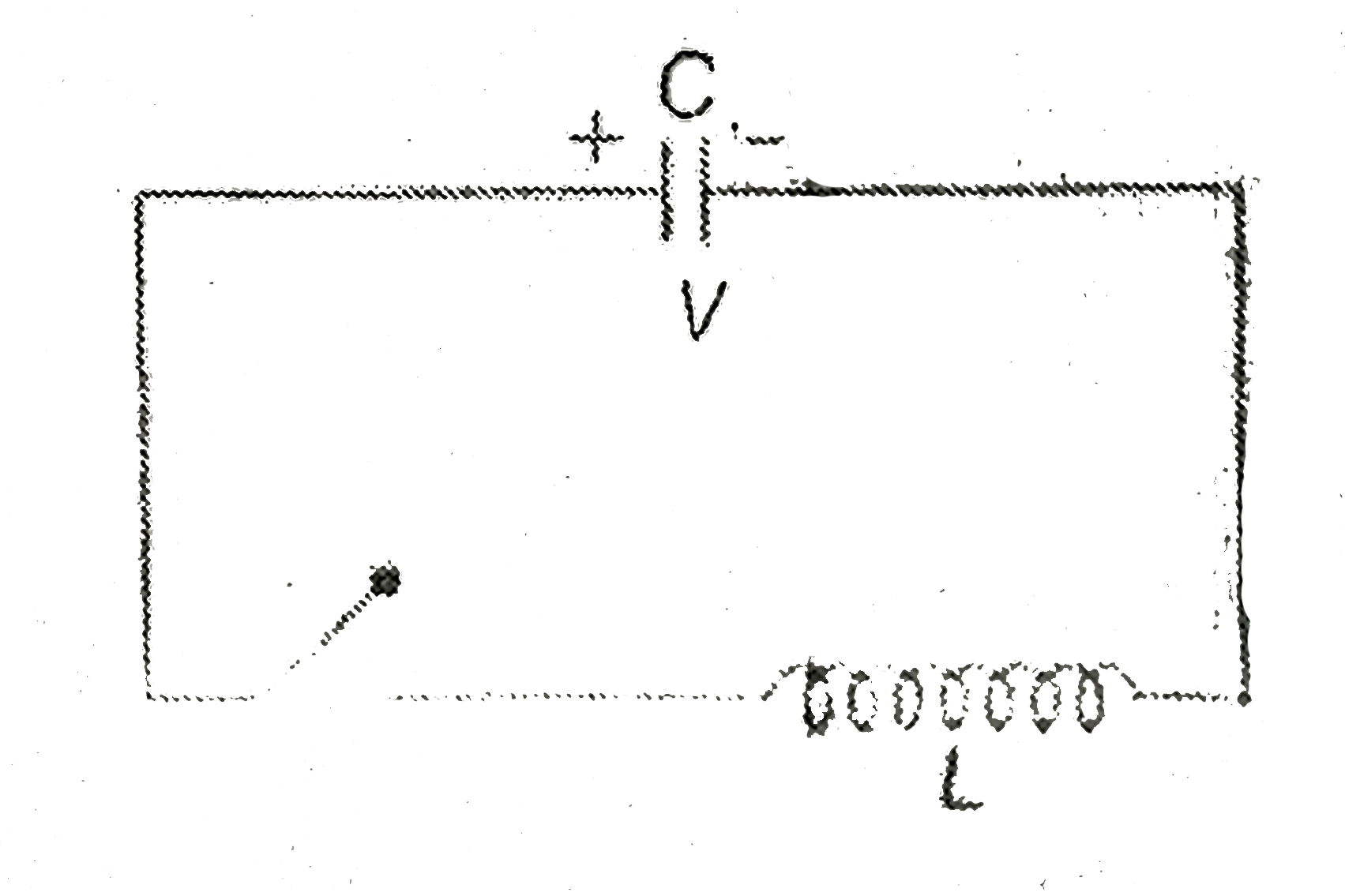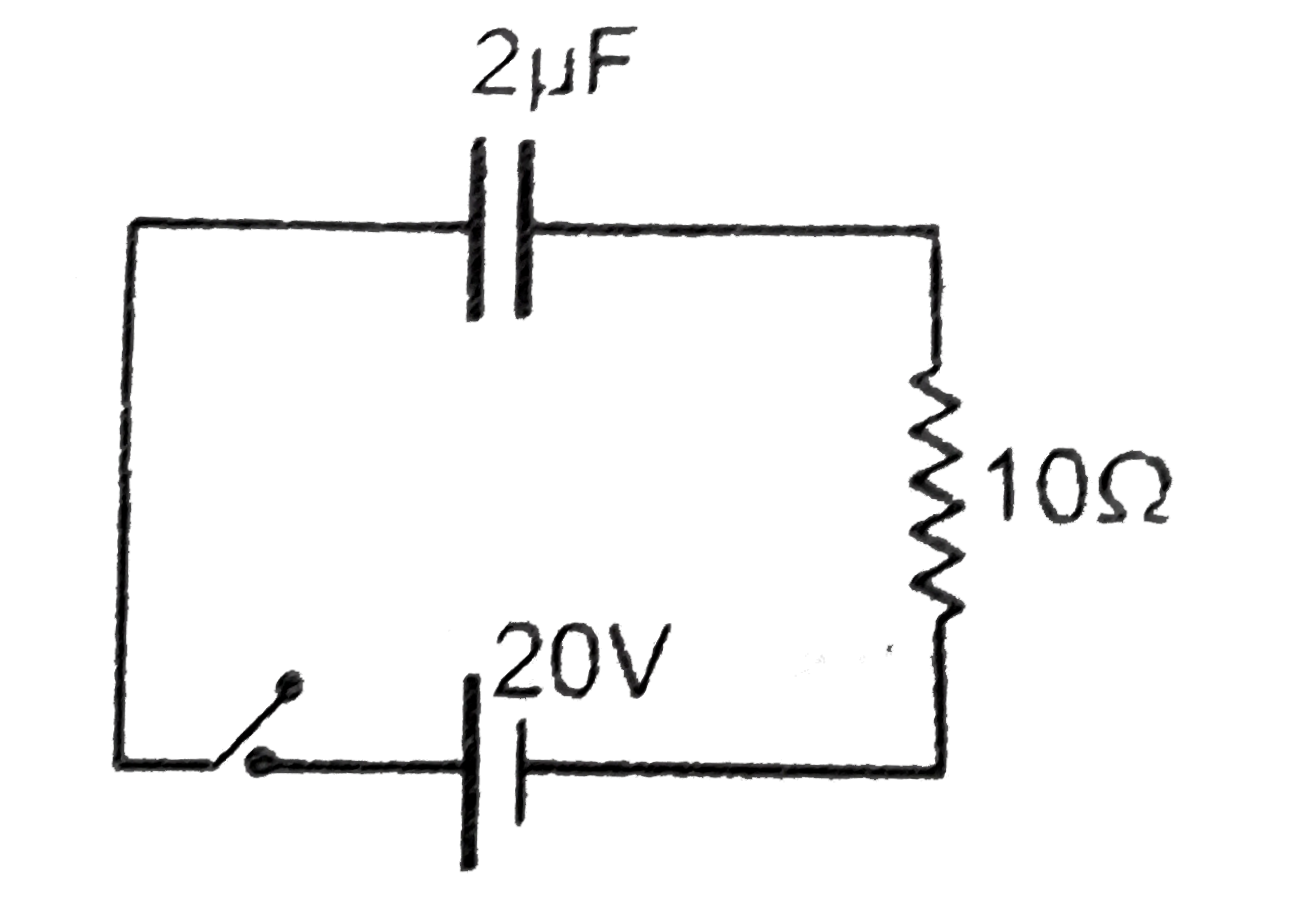It is desired to set up an undriven L-C circuit in which the capacitor is originally charged to potential difference of 100.0 V . The maximum current is to be 1.0 A and the oscillation frequency is to be 1000 Hz . What are the required values of L and C ?
The correct Answer is:C= 1.59 μ F , L = 15.9 mH
To solve the problem of finding the required values of inductance (L) and capacitance (C) for an undriven L-C circuit with given parameters, we can follow these steps:
Step 1: Understand the given parameters
We have:
- Initial potential difference (V) = 100 V
- Maximum current (I₀) = 1 A
- Oscillation frequency (f₀) = 1000 Hz
Step 2: Relate charge, capacitance, and potential
The charge (Q₀) on the capacitor can be calculated using the formula:
Q₀=C⋅V
Where:
- C is the capacitance
- V is the voltage across the capacitor
Step 3: Calculate the energy stored in the capacitor
The energy stored in the capacitor (U_C) can be expressed as:
UC=12CV2
Substituting the values:
UC=12C(100)2=5000C
Step 4: Calculate the energy stored in the inductor
The energy stored in the inductor (U_L) is given by:
UL=12LI2
Substituting the maximum current:
UL=12L(1)2=12L
Step 5: Set the energies equal
Since there is no resistance in the circuit, the maximum energy stored in the capacitor is equal to the maximum energy stored in the inductor:
UC=UL
Thus:
5000C=12L
Rearranging gives us:
L=10000C (Equation 1)
Step 6: Use the frequency formula
The oscillation frequency (f₀) is related to L and C by the formula:
f₀=12π√LC
Substituting the given frequency:
1000=12π√LC
Rearranging gives:
√LC=12000π
Squaring both sides:
LC=1(2000π)2 (Equation 2)
Step 7: Substitute Equation 1 into Equation 2
From Equation 1, substitute L=10000C into Equation 2:
(10000C)C=1(2000π)2
This simplifies to:
10000C2=1(2000π)2
C2=110000(2000π)2
C2=14×108π2
Taking the square root:
C=120000π
Step 8: Calculate the value of L
Now substitute the value of C back into Equation 1:
L=10000C=10000(120000π)=1000020000π=12π
Final Results
Thus, the required values are:
- Capacitance C=120000π F
- Inductance L=12π H
We have:
- Initial potential difference (V) = 100 V
- Maximum current (I₀) = 1 A
- Oscillation frequency (f₀) = 1000 Hz
The charge (Q₀) on the capacitor can be calculated using the formula:
Q₀=C⋅V
Where:
- C is the capacitance
- V is the voltage across the capacitor
The energy stored in the capacitor (U_C) can be expressed as:
UC=12CV2
Substituting the values:
UC=12C(100)2=5000C
The energy stored in the inductor (U_L) is given by:
UL=12LI2
Substituting the maximum current:
UL=12L(1)2=12L
Since there is no resistance in the circuit, the maximum energy stored in the capacitor is equal to the maximum energy stored in the inductor:
UC=UL
Thus:
5000C=12L
Rearranging gives us:
L=10000C (Equation 1)
The oscillation frequency (f₀) is related to L and C by the formula:
f₀=12π√LC
Substituting the given frequency:
1000=12π√LC
Rearranging gives:
√LC=12000π
Squaring both sides:
LC=1(2000π)2 (Equation 2)
From Equation 1, substitute L=10000C into Equation 2:
(10000C)C=1(2000π)2
This simplifies to:
10000C2=1(2000π)2
C2=110000(2000π)2
C2=14×108π2
Taking the square root:
C=120000π
Now substitute the value of C back into Equation 1:
L=10000C=10000(120000π)=1000020000π=12π
Thus, the required values are:
- Capacitance C=120000π F
- Inductance L=12π H
Similar Questions
A capacitor when charged by a potential difference of 200 Volts, stores a charge of 0.1C. By discharging energy liberated by the capacitor is-
View SolutionIn an oscillating L−C circuit in which C=4.00μF, the maximum potential difference capacitor during the oscillations is 1.50V and the maximum current through 50.0mA.
(a) What is the inductance L?
(b) What is the frequency of the oscillations?
(c) How much time does the charge on the capacitor take to rise from zero to its maximum value?
View Solution
Knowledge Check
A capacitor is charged through a potential difference of 200 V, when 0.1C charge is stored in it. The amount of energy released by it, when it is discharged is
A5 JB10 JC20 JD2.5 J
A capacitor of capacitnace C is charged to a potential difference V and then disconnected from the battery. Now it is connected to an inductor of inductance L at t=0. Then

View SolutionIn parallel L-C circuit current from the source is 1A and current from the inductor is 0.6A. The current from capacitor is
View SolutionA 1.00μF capacitor is charged by a 40.0V power supply. The fully charged charged capacitor is then discharged through a 10.0mH inductor. Find the maximum current in the resultaing oscillations.
View SolutionThe 500μF capacitor is charged at a steady rate of 100μC/s. The potential difference across the capacitor will be 10 V after an interval of
View SolutionThe 500μF capacitor is charged at a steady rate of 100μC/s. The potential difference across the capacitor will be 10 V after an interval of
View SolutionInitially capacitor is uncharged at t=0 switch is closed. Charge on capacitor when current in the circuit is 10% of maximum current :

View SolutionIn LC circuit the maximum charge in capacitor is q0. Then maximum value of rate of change of current is
View Solution
